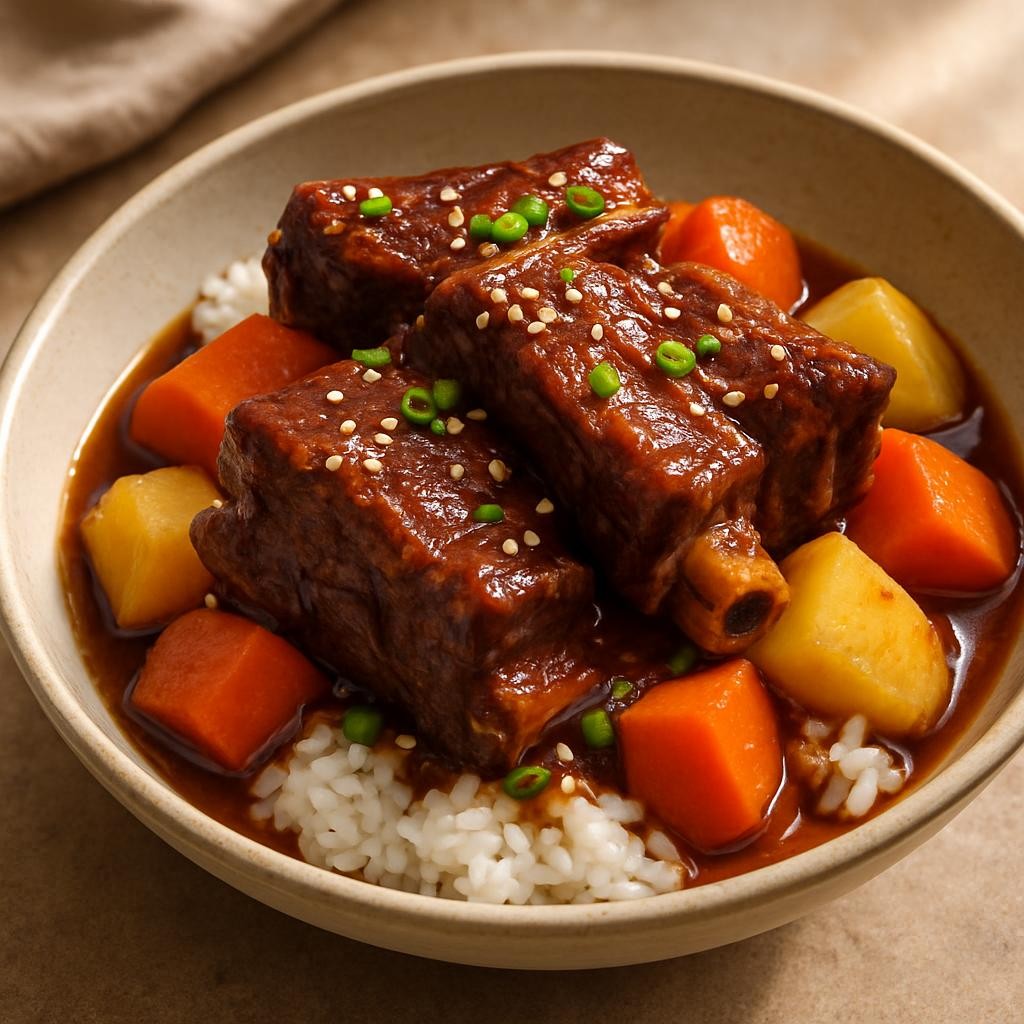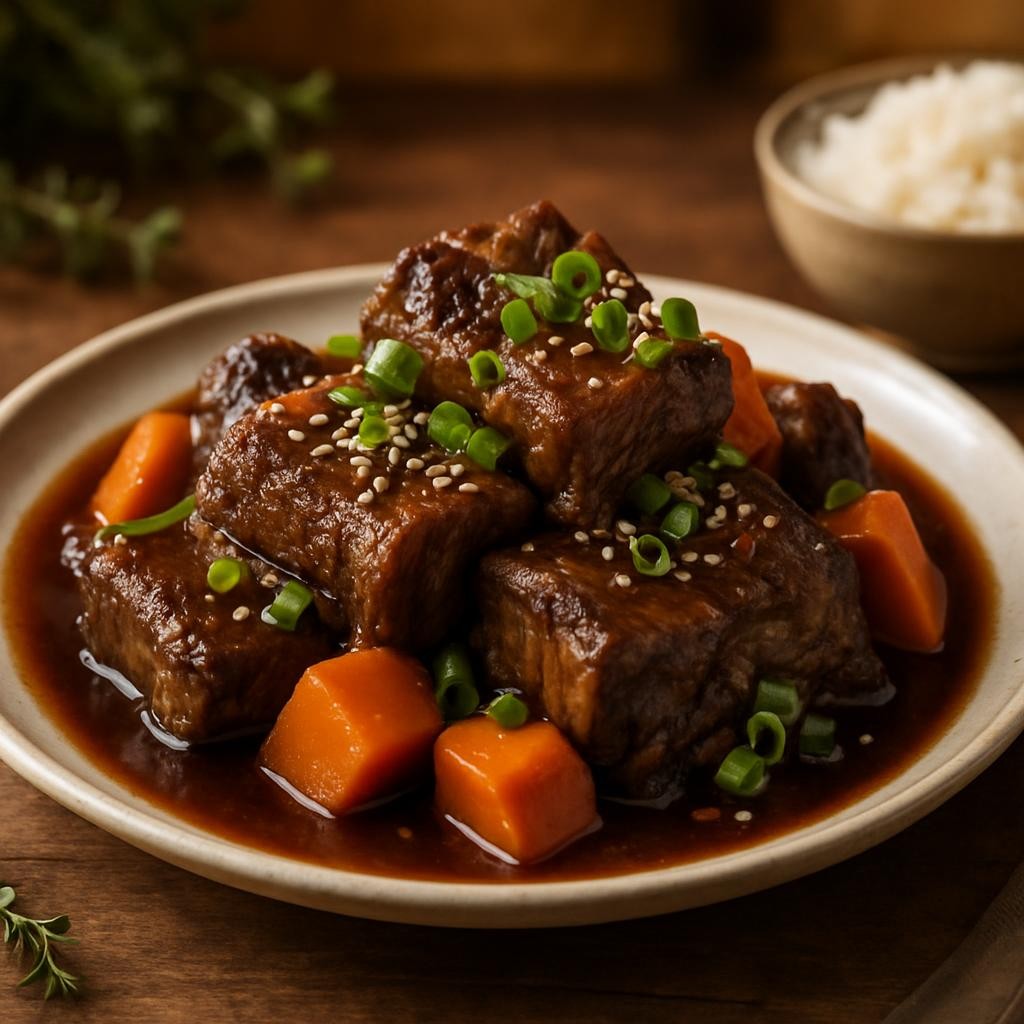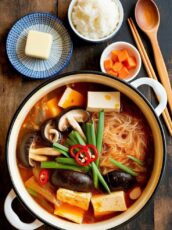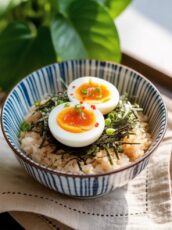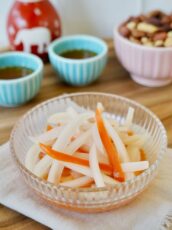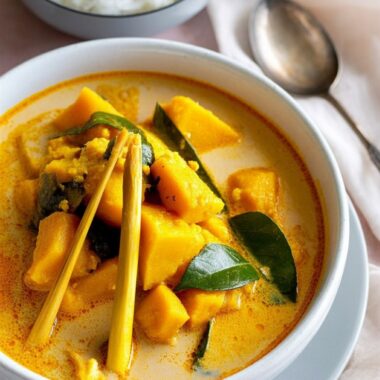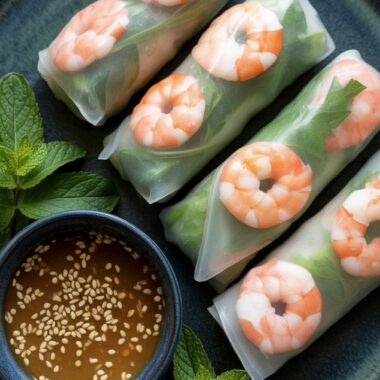Bossam, the beloved Korean dish of boiled pork wraps, is an indulgent and flavorful delight that has captured the hearts of food lovers worldwide. This dish features tender, succulent slices of pork belly enveloped in crisp lettuce leaves and accompanied by an array of vibrant side dishes and condiments. The combination of textures and flavors, from the rich pork to the fresh veggies, creates a culinary experience that’s both satisfying and refreshing. It’s perfect for gatherings or simply a cozy night in, making it a must-try for anyone looking to explore Korean cuisine.
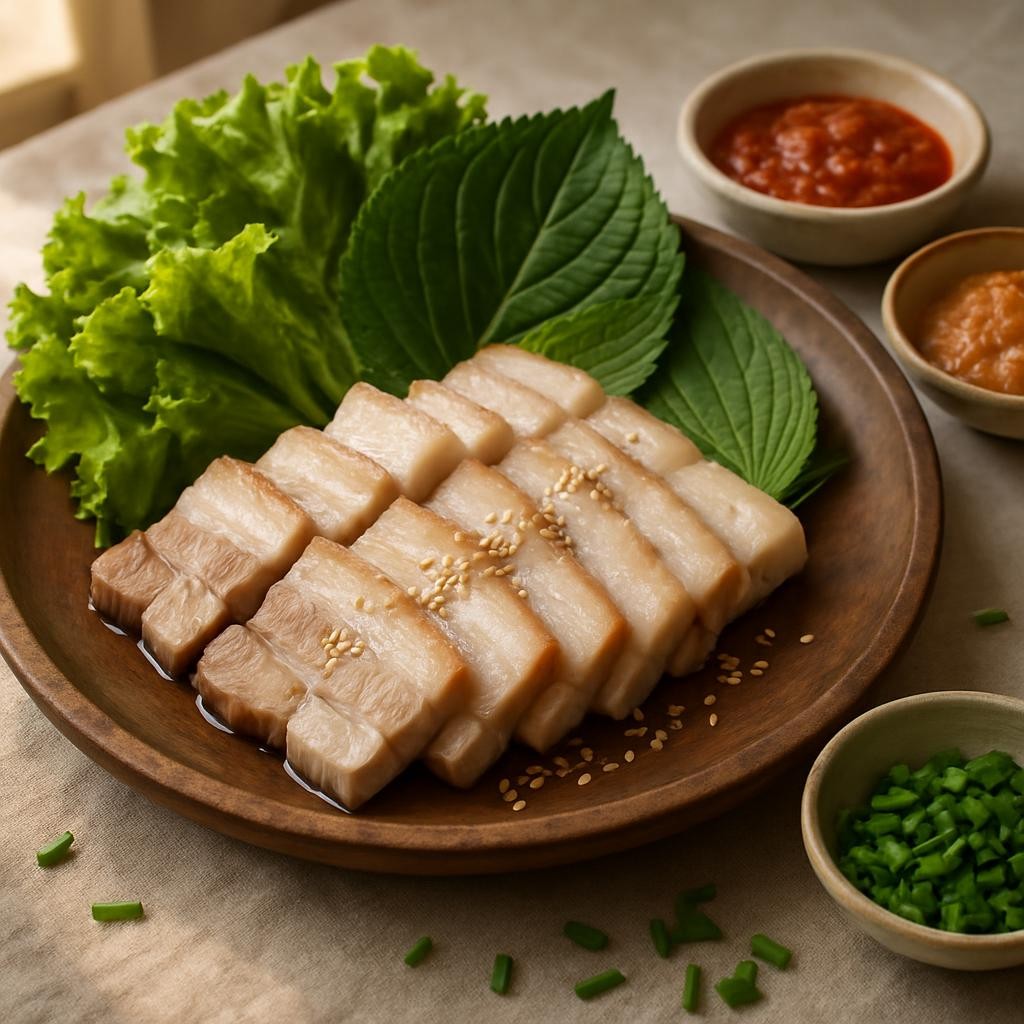
Why You Will Love This Recipe
You will love this Bossam recipe not only for its delicious taste but also for the experience of creating it. Growing up, my family would prepare this dish during special occasions, and it became synonymous with celebrations and togetherness. The process of boiling the pork, preparing the sides, and then wrapping them together in lettuce was always a fun and interactive experience. It brought everyone together around the table, encouraging laughter and conversation. Plus, who doesn’t love a dish that allows you to customize each bite to your liking? With its rich flavors and communal vibe, Bossam is bound to create lasting memories in your own kitchen.
Tips and Tricks
- Choose Quality Pork: Opt for high-quality pork belly for the best flavor and tenderness. Look for meat with a good balance of fat and lean.
- Marinate for Flavor: While not always traditional, marinating the pork belly for a few hours or overnight can enhance its flavor, making it even more delicious.
- Use Fresh Ingredients: Fresh vegetables and herbs make all the difference. Use crisp lettuce, vibrant garlic chives, and ripe perilla leaves for the best experience.
- Experiment with Sauces: Traditional ssamjang (Korean dipping sauce) is excellent, but feel free to experiment with other sauces like gochujang or even a homemade garlic soy sauce for a twist.
Make Ahead Tips
You can prepare several components of Bossam in advance:
- Pork Belly: Cook the pork belly a day ahead and let it cool in the broth. It can be stored in the refrigerator and reheated before serving.
- Side Dishes: Make kimchi, garlic chives, and other accompaniments a day or two ahead to allow the flavors to meld.
- Sauces: Prepare your dipping sauces ahead of time; they can be stored in an airtight container in the fridge for up to a week.
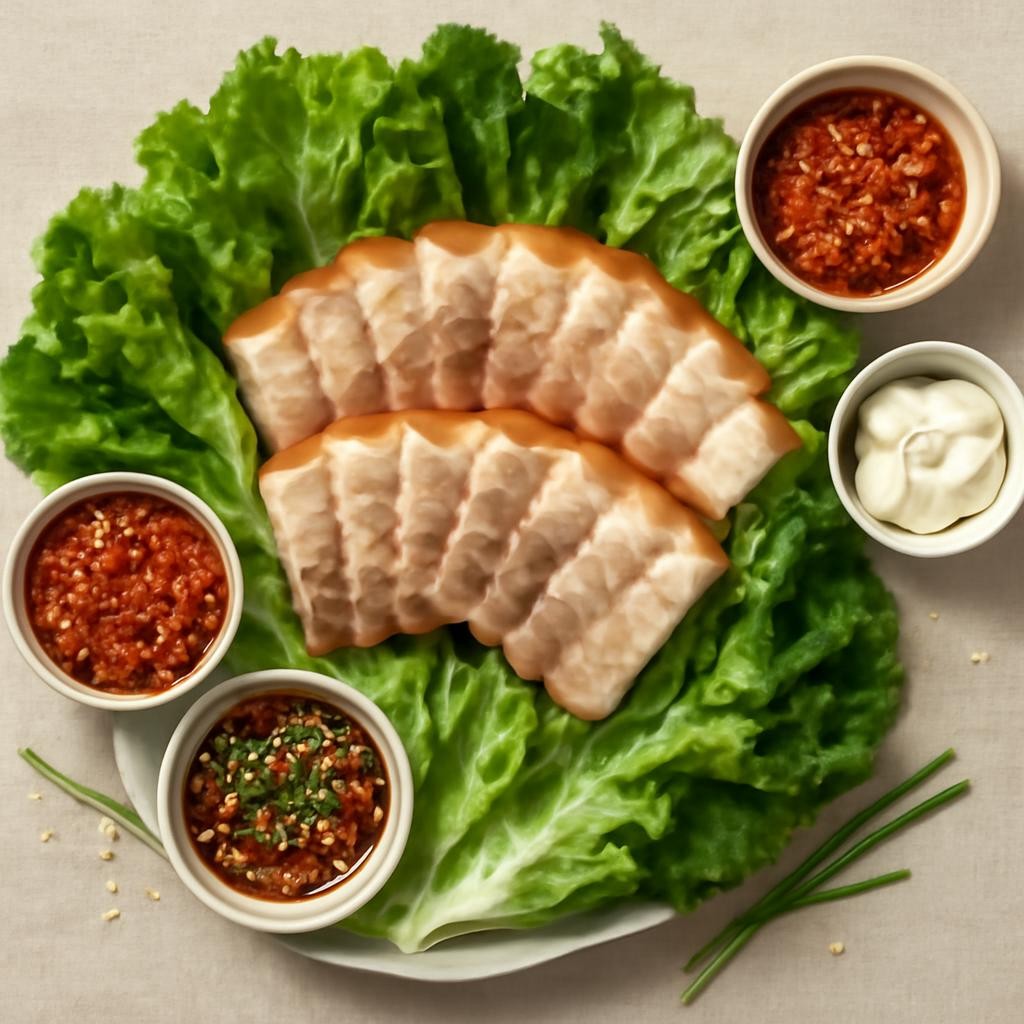
Recipe Variations
- Different Meats: While pork belly is traditional, you can substitute with pork shoulder or even chicken thighs for a lighter option.
- Spicy Twist: Add some gochugaru (Korean chili flakes) to your dipping sauce for an extra kick.
- Vegetarian Version: Replace the pork with marinated tofu or mushrooms for a plant-based alternative while keeping the same flavors.
How to Serve
Serve Bossam by laying out the boiled pork belly on a large platter surrounded by a variety of colorful sides. Provide individual plates of lettuce leaves, garlic, and perilla leaves, along with small bowls of ssamjang and other sauces. Encourage guests to build their wraps with their desired fillings, adding a sprinkle of sesame seeds or chopped scallions for an extra layer of flavor.
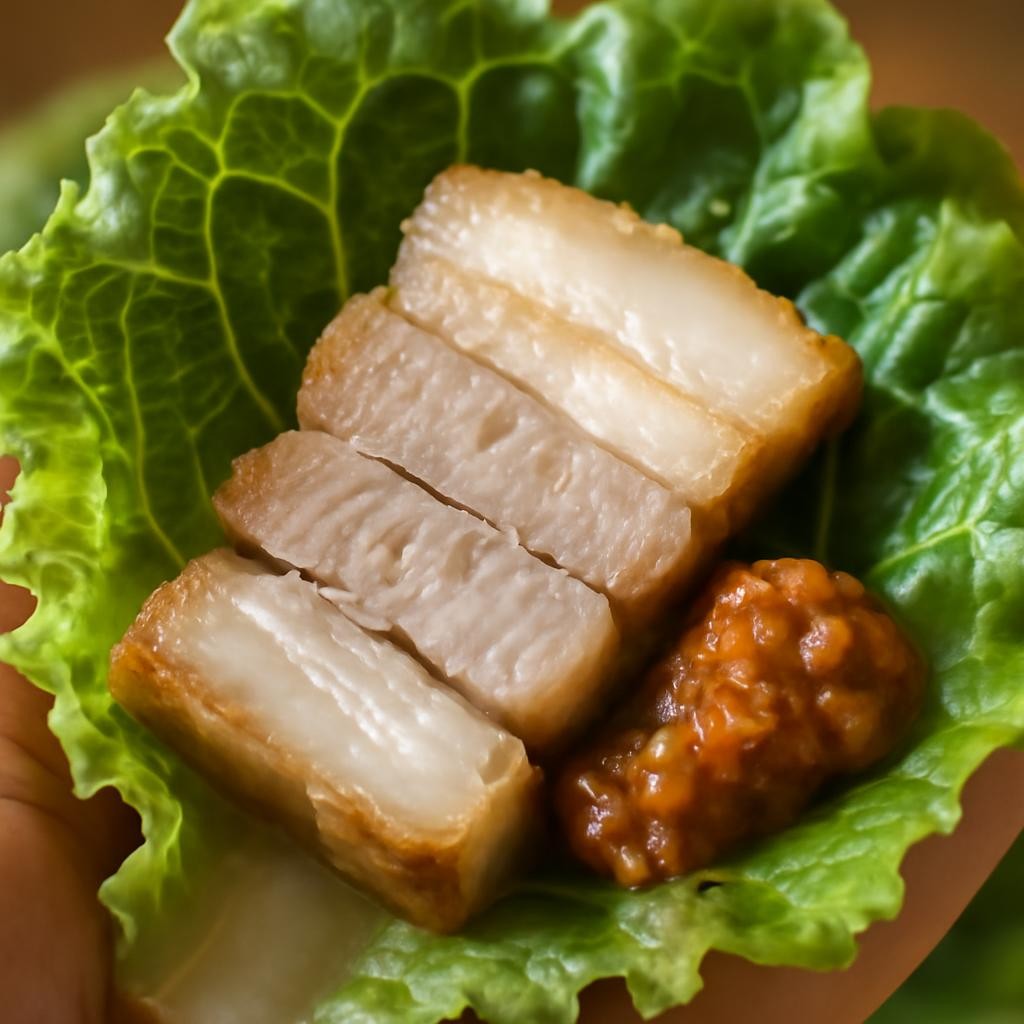
Pairing Suggestions
Pair Bossam with a light, crisp Korean beer like Cass or a refreshing soju cocktail. If you prefer wine, a chilled white wine such as Sauvignon Blanc complements the rich pork beautifully. For side dishes, consider serving a simple cucumber salad or a refreshing radish salad to offset the richness of the pork.
How to Store
Leftover Bossam can be stored in an airtight container in the refrigerator for up to 3 days. For longer storage, the cooked pork can be frozen for up to 2 months. To reheat, simply place it in a pot of warm water, or microwave it gently to avoid drying out the meat.
Equipment Needed
- Large pot for boiling the pork
- Cutting board and sharp knife for slicing
- Serving platter for presentation
- Mixing bowls for sauces and side ingredients
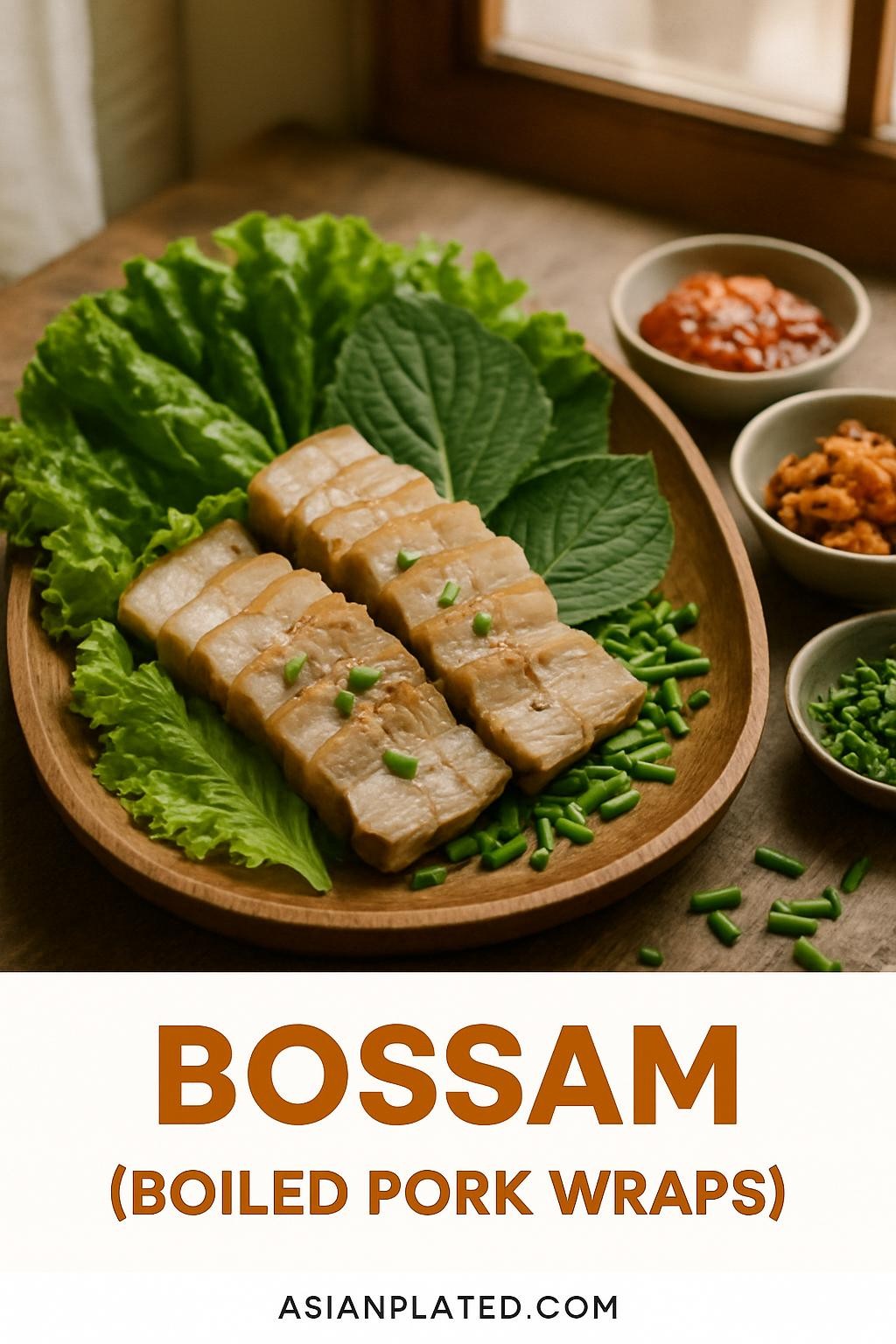
Dietary Adaptations
To make Bossam vegan, replace the pork belly with marinated tofu or seitan. Ensure your sauces are free from animal products, and use vegetable broth for cooking. Gluten-free eaters can swap soy sauce with tamari or coconut aminos for the dipping sauce.
Seasonal Adaptations
In spring, pair Bossam with fresh, young greens like pea shoots or baby bok choy. In fall, consider adding roasted vegetables like sweet potatoes or squash as side dishes, which provide a warm contrast to the dish.
Recipe FAQs
- Can I use pork loin instead of pork belly? Yes, but pork belly is preferred for its tenderness and flavor. If using pork loin, reduce cooking time to avoid dryness.
- How long should I boil the pork? Boil for about 1.5 to 2 hours until tender, but check occasionally to avoid overcooking.
- Can I make Bossam without the dipping sauce? While the sauce enhances the dish, you can enjoy the pork and veggies on their own if you prefer.
Bossam
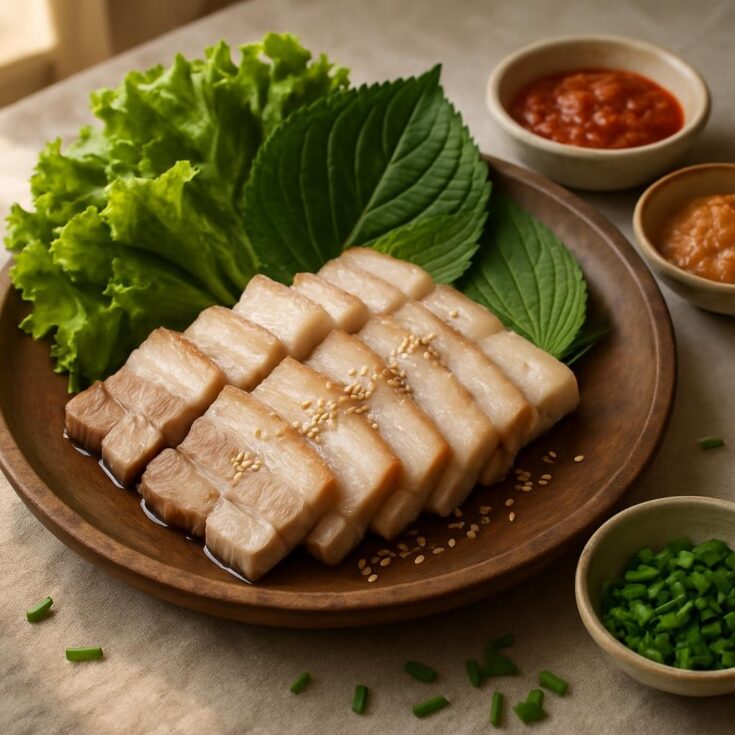
Bossam, the beloved Korean dish of boiled pork wraps, is an indulgent and flavorful delight that has captured the hearts of food lovers worldwide.
Ingredients
- 2 lbs pork belly
- 1 tablespoon salt
- 4 cloves garlic, smashed
- 1 onion, quartered
- 2 inches ginger, sliced
- 1 tablespoon black peppercorns
- Lettuce leaves (for wrapping)
- Perilla leaves (optional)
- Garlic chives (optional)
- Ssamjang (Korean dipping sauce)
- Sesame seeds (for garnish)
Instructions
- Boil the Pork: In a large pot, combine the pork belly, garlic, onion, ginger, black peppercorns, and enough water to cover the meat. Bring to a boil over medium-high heat.
- Simmer: Once boiling, reduce the heat to low and let it simmer for 1.5 to 2 hours until the meat is tender.
- Cool: Remove the pork from the pot and let it cool for about 10 minutes before slicing it into thin pieces.
- Prepare the Wraps: Arrange the sliced pork on a platter with lettuce leaves, perilla leaves, garlic chives, and dipping sauce on the side.
- Serve: Invite your guests to build their own wraps with the ingredients and enjoy!
Nutrition Information:
Yield: 4 Serving Size: 1Amount Per Serving: Calories: 746Total Fat: 54gSaturated Fat: 18gTrans Fat: 0gUnsaturated Fat: 33gCholesterol: 191mgSodium: 1984mgCarbohydrates: 9gFiber: 2gSugar: 3gProtein: 55g
Asianplated.com, occasionally offers nutritional information for recipes contained on this site. This information is provided as a courtesy and is an estimate only. This information comes from online calculators. Although allchickenrecipes.com attempts to provide accurate nutritional information, these figures are only estimates.
Final Thoughts
Making Bossam is not just about the food; it’s about the experience of gathering together and enjoying a delicious meal that allows for creativity and interaction. Once you’ve mastered this recipe, you’ll find that it quickly becomes a favorite in your household. So, roll up your sleeves, gather your loved ones, and dive into this delightful culinary tradition that’s sure to bring joy to your table. Happy cooking!

